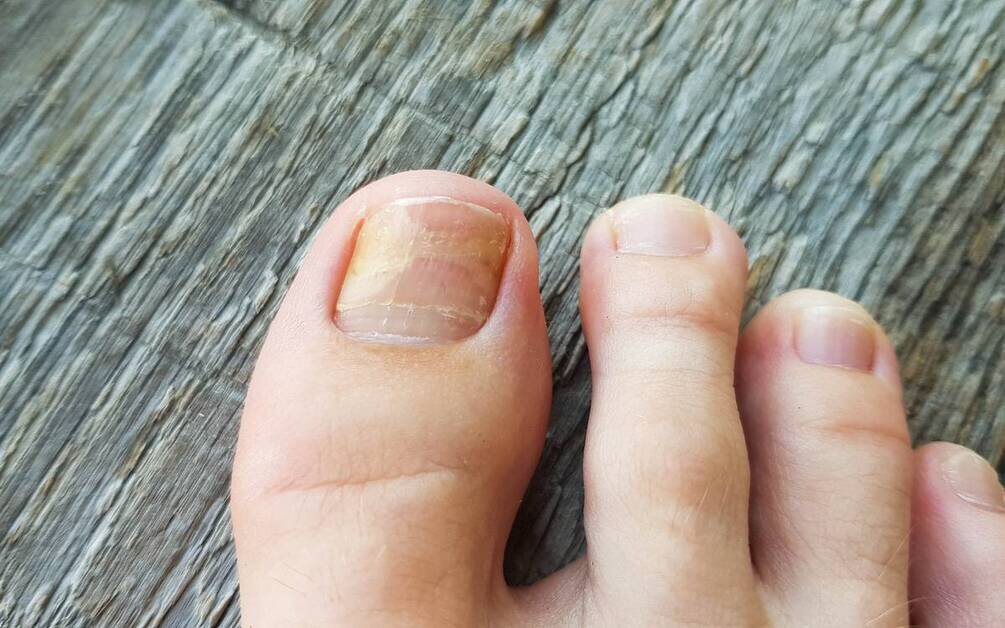How To Grow Your Toenail Back

Imagine the sting of a stubbed toe, the dread as you peel back your sock, and the slow realization that…part of your toenail is missing. It's a surprisingly common experience, from athletic mishaps to clumsy encounters with furniture. But beneath the initial shock lies a persistent question: will it grow back? And more importantly, how?
Losing a toenail can be unsettling, but it's rarely a permanent condition. This article dives into the process of toenail regrowth, offering guidance on how to protect the nail bed, prevent infection, and promote healthy regrowth. We’ll explore the factors that influence this process, including injury severity, individual health, and the vital role of proper care.
Understanding Toenail Regrowth
Toenails, like fingernails, are made of keratin, a protein that’s produced by the nail matrix, located at the base of the nail under the cuticle. When a toenail is damaged or lost, the matrix is responsible for generating new cells that gradually push forward, forming the new nail.
The speed of regrowth varies from person to person, but generally, it takes 4 to 6 months for a fingernail to fully regrow, and 12 to 18 months for a toenail, according to the American Academy of Dermatology. Several factors can influence this timeline.
Factors Affecting Regrowth
The severity of the initial injury plays a crucial role. A partially detached nail that remains connected to the nail bed may regrow faster than a completely avulsed nail.
Underlying health conditions like diabetes or peripheral artery disease can impede blood flow to the extremities, slowing down the regrowth process. Good circulation is vital for delivering nutrients and oxygen to the nail matrix.
Age also influences regrowth. Children's nails tend to grow faster than those of adults. Nutritional deficiencies, particularly in biotin, iron, and zinc, can also impact nail health and growth rate.
Immediate Care After Toenail Loss
The initial care following a toenail injury is critical for preventing infection and promoting optimal healing. Begin by gently cleaning the affected area with mild soap and water.
Pat the area dry and apply an over-the-counter antibiotic ointment. Cover the toe with a sterile, non-stick bandage. Change the bandage daily or more frequently if it becomes soiled.
To protect the exposed nail bed, consider using a toe protector or cushioned bandage, especially when wearing shoes. This will help to prevent further trauma and discomfort.
Preventing Infection
Keeping the area clean and dry is paramount in preventing infection. Watch for signs of infection, such as increased pain, redness, swelling, pus, or fever.
If you suspect an infection, seek immediate medical attention. A healthcare provider may prescribe oral or topical antibiotics to combat the infection.
Soaking the affected toe in a solution of warm water and Epsom salts for 10-15 minutes a day can help to soothe the area and draw out any potential infection.
Promoting Healthy Regrowth
While patience is key, there are several steps you can take to support healthy toenail regrowth. Focus on maintaining a healthy diet rich in vitamins and minerals.
Ensure adequate intake of protein, biotin, iron, and zinc, all of which are essential for nail health. Consider taking a multivitamin to address any potential deficiencies.
Proper foot hygiene is crucial. Keep your feet clean and dry, and wear breathable socks and shoes. Avoid tight-fitting shoes that can put pressure on the nail bed.
Protecting the Nail Bed
The nail bed is particularly vulnerable during the regrowth process. Protect it from trauma by wearing comfortable, supportive footwear.
Avoid activities that could cause further injury to the toe, such as high-impact sports or wearing ill-fitting shoes. If you must engage in such activities, consider using a toe protector or cushioned bandage.
Keep the nail bed moisturized with a gentle lotion or oil. This can help to prevent dryness and cracking, which can impede regrowth.
When to Seek Medical Attention
While most toenail injuries can be managed at home, there are instances when medical intervention is necessary. If you experience severe pain, profuse bleeding, or signs of infection, seek immediate medical attention.
A healthcare provider can assess the injury, clean the wound thoroughly, and prescribe appropriate medications to prevent infection or manage pain. They may also need to remove any remaining fragments of the old nail.
If you have underlying health conditions like diabetes or peripheral artery disease, it’s essential to consult with a healthcare professional, as these conditions can complicate the healing process.
Potential Complications
In some cases, complications can arise during toenail regrowth. Ingrown toenails can occur if the new nail grows into the surrounding skin. This can cause pain, inflammation, and infection.
Fungal infections can also affect the nail bed, leading to thickened, discolored, or brittle nails. Treatment for fungal infections typically involves oral or topical antifungal medications.
In rare cases, a nail bed injury can lead to permanent nail deformities or impaired nail growth. It's important to follow proper care instructions and seek medical attention if you notice any unusual changes in your nail.
Living With a Missing Toenail
The journey of toenail regrowth requires patience and diligent care. It can be frustrating to wait for the nail to fully regrow, but with proper attention, you can minimize the risk of complications and promote healthy regrowth.
Focus on protecting the nail bed, preventing infection, and maintaining a healthy lifestyle. Remember to wear comfortable shoes, practice good foot hygiene, and seek medical attention if you notice any concerning signs or symptoms.
Losing a toenail is a temporary setback. By understanding the process of regrowth and taking proactive steps to support it, you can confidently look forward to the return of a healthy, strong toenail. The important thing is consistent care and a proactive approach to foot health.

















:max_bytes(150000):strip_icc()/VWH-JulieBang-SuccessfulToenailFungusTreatment-Standard-03be403696bb4c6d824a6cc6090e7165.jpg)
